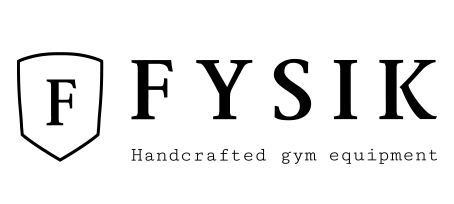What is ‘amenity oriented development’? Applied to real estate, this is a broad concept that can include any feature that is attractive to a project’s chosen market and thus adds value to the land. Many amenities are integral to a site, such as a splendid view, convenient access, or even the climate and local culture. In an urban environment like Bangkok or other major cities in South East Asia, or a seaside resort environment, natural amenities are often recognized as the key drivers of both commercial and residential real estate development. However, integral amenities can also be those that are man-made.
As developers, when we consider man made amenities we usually mean a recreational, hospitality, leisure, or social facility that is developed as part of the core project such as a tennis court, fitness facility, restaurant, lounge, full facility private athletic club, or a golf course or marina. The basic assumption is that man-made amenities complement the core real estate project. Nearly any type of commercial or residential property development can utilize amenities to maximize the attractiveness of the project to its target market. However, there are potential pitfalls along the way.
The primary reasons developers add recreational amenities to their projects is to 1) add value to improved land or real estate projects, or 2) gain marketing leverage for sales. Most certainly a well-planned amenity package can establish a project’s credibility, market attractiveness, and brand image. In some larger developments recreational amenities are included with a view toward being profitable entities on their own. In larger projects, amenities can be large enough to become the social focus of a community and serve a noble purpose well beyond adding value to the building or land and selling units faster.
For developers, having an “amenity strategy” means 1) having a clear understanding of the market, 2) a recognition of the reality of the core project’s life cycle, and 3) an early plan for the eventual transfer of the operational management and/or equity control of the amenity. The two basic purposes of recreational amenities ie. increase land value, and adding marketing leverage reflect the interest of the purchaser/user on one hand and the interest of the developer on the other. Developers may choose some facilities for their marketing value and others because they will be heavily used. For example, club houses and restaurants add value, while children’s playgrounds and tennis courts have user appeal. This divergence between marketing orientation and user orientation has long term implications. Sometimes the developer’s chosen amenity, geared to sell real estate, will be expensive to maintain and also under-utilized, while facilities with extensive user appeal may never get built. The natural combination of recreational and social amenities usually found at country clubs that appeal to families are never built as promised in the marketing literature. By the time a critical mass of users are available, the developer is gone or disinterested.
The phasing of a project is one of the principle issues of amenity oriented development. Many experts believe recreational amenities should be built first so that they can be used to attract buyers. But this can be one of the major risks involved in recreational development. The facility may require heavy early financial resources and produce high initial operating losses that the project cannot absorb.
One of the biggest conflicts between the developer and the purchaser/end user is the quality of the recreational facilities. Very often when a developer includes a package of recreational facilities for the purpose of gaining marketing leverage, he does not have the end user in mind. What gets built is a basic, brochure fulfilling, poor quality facility that soon falls into disrepair by the phase of the project in which the buyer becomes the end user and is asked to contribute common area fees. Buyers would be wise to check the specifications, construction techniques, and the quality standards of sports facilities and the equipment selection of the recreational amenities being promised to them. Poorly designed and built facilities can cost more to maintain and repair than the resident’s common area fees can afford. One of the most reoccurring situations in residential and commercial property development is that poor quality specifications in the architect’s bid package sometimes leaves the developer at the mercy of his general or turn-key contractor. All this stems from poor initial planning or developer lack of interest in what happens after title transfer. In other words, if there are 100 units in a development, each unit sale is another reduction of 1% in the developer’s long term interest in his amenity package. Amenity positioning is an important branding tool for developers.
The key to resolving these conflicts between the developer and buyer/user is for the developer to establish an ‘operational plan’ that sets forth who will develop, who will own, and who will operate the amenity, for how long, and who will use the facilities on what terms. Public ‘disclosure’ of the developer’s operational plan can actually add perceived value in the minds of buyers. This is a fact all but the most astute developers tend to miss. Developers with an up-front amenity strategy can use disclosure as a compelling marketing tool that convinces buyers of a project’s credibility and commitment to quality.
One of the most widely accepted myths in developing large recreational, hospitality, and health amenities is that the developer needs to retain control of the operations and the ownership of the amenity over a substantial period of the development process. This belief is particularly strong in family-owned developments that include major recreational and social facilities in their package. The disadvantage of the developer retaining control is that because of the developer’s lack of expertise, and lack of commitment to the many related disciplines of amenity management, the project may financially fail to live up to its promise and potential.
In a complex residential, commercial, or hospitality development with a variety of interests from owners, residents, members, and users, dealing with disposition issues in the middle or the end of the project’s development can leave the developer in an exposed position. This is because conflicting marketing promises, capital costs, overheads, and the current market-place can become overwhelming. Disclosure means having disposition plans in place early in the project cycle. One of the most important components of amenity planning is to work with a professional who can estimate fixed operating cost under various operating scenarios. In large residential or resort area developments it is advisable to establish a legal formula for common area fees to contribute to the operating cost of profit centre amenities. Voluntary monthly dues and joining fees from residents do not usually provide enough support for community amenities.
There are four main types of disposition plans used by developers when framing their operational plan for the inclusion of larger recreational and social amenities into their projects.
For the developer looking the add value to his project with the inclusion of recreational or hospitality amenities it is important to have an amenity strategy that addresses the issues of phasing, quality, disclosure and the disposition of the facility after it no longer has economic importance for unit sales. For the buyers, club members, and users of these amenities, it would be wise to understand the ‘transfer’ of not only the perceived value over time from the developer to the user, but also the transfer of economic responsibility of maintaining the facility. Quality sells and costs less in the long term. Buyers should insist on international standard design, construction, materials and surfacing, and equipment in the recreational amenities that are part of the project they are buying into.
George Foose is Executive Director of Sports Engineering And Recreation Asia Ltd. (Seara) Seara has had its regional headquarters in Bangkok for 24 years and specializes in the planning, supply and installation of quality recreational facilities through-out the Indochina region. Seara has offices in Bangkok, Phuket, Pattaya, Samui, Yangoon, Ho Chi Minh City, and Hanoi. Mr Foose is considered a regional expert in defining the relationship between property development and recreational facilitites. Seara also developed, owns, and operates the Cascade Club, Bangkok, Aldo’s Mediterranean Bistro and Wine Bar, RPM Health Club, Phuket, and the Green Leaf Spa brand of professional day spas.






















| Cookie | Duration | Description |
|---|---|---|
| cookielawinfo-checkbox-analytics | 11 months | This cookie is set by GDPR Cookie Consent plugin. The cookie is used to store the user consent for the cookies in the category "Analytics". |
| cookielawinfo-checkbox-functional | 11 months | The cookie is set by GDPR cookie consent to record the user consent for the cookies in the category "Functional". |
| cookielawinfo-checkbox-necessary | 11 months | This cookie is set by GDPR Cookie Consent plugin. The cookies is used to store the user consent for the cookies in the category "Necessary". |
| cookielawinfo-checkbox-others | 11 months | This cookie is set by GDPR Cookie Consent plugin. The cookie is used to store the user consent for the cookies in the category "Other. |
| cookielawinfo-checkbox-performance | 11 months | This cookie is set by GDPR Cookie Consent plugin. The cookie is used to store the user consent for the cookies in the category "Performance". |
| viewed_cookie_policy | 11 months | The cookie is set by the GDPR Cookie Consent plugin and is used to store whether or not user has consented to the use of cookies. It does not store any personal data. |